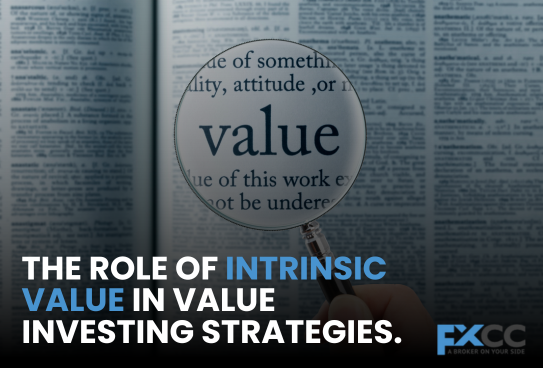Value investing is a long-standing investment approach that focuses on purchasing stocks that are priced below their true worth. This strategy has been a favorite among savvy investors for decades, and its core principle hinges on one important concept—intrinsic value. Intrinsic value allows investors to assess a company’s real value, using its financial health and growth potential, rather than relying on fluctuating market prices.
What Is Intrinsic Value?
In simple terms, intrinsic value is an estimate of a company’s genuine worth, calculated based on factors like its earnings, cash flow, assets, and growth prospects. Unlike the market price, which is influenced by external factors such as investor sentiment and market conditions, intrinsic value aims to provide a clearer, more stable reflection of a company’s long-term potential.

The significance of intrinsic value in value investing cannot be overstated.
Understanding intrinsic value is fundamental to the value investing strategy. It allows investors to spot undervalued stocks—those that are currently trading for less than they are truly worth. The goal is to purchase these stocks at a discount, knowing that their true value will be realized over time as the market adjusts.
An essential part of this strategy is the margin of safety, which protects against overpaying for a stock. When you buy a stock for less than its intrinsic value, you build in a cushion against potential risks, such as market volatility or miscalculations in your assessment of the company’s worth.
Calculating Intrinsic Value
Determining a company’s intrinsic value isn’t an exact science, and different investors may use various models to arrive at their estimates. Common techniques include several key methods for determining a company’s worth.
Discounted Cash Flow (DCF) Analysis: This method projects a company’s future cash flows and then discounts them back to the present value. It represents the belief that a company’s value today comes from the money it is expected to make in the future.
Price-to-Earnings (P/E) Ratio: By comparing the stock price to its earnings per share (EPS), investors can get an idea of whether a stock is underpriced or overpriced relative to its earnings performance.
Price-to-Book (P/B) Ratio: This ratio compares the company’s market price to its book value (the difference between its assets and liabilities). A low price-to-book ratio can indicate that a stock might be underpriced.
These methods allow investors to form an educated estimate of intrinsic value, but most combine several approaches to get a well-rounded understanding of a company’s true worth.
The Margin of Safety
The margin of safety is a critical tool for value investors. This margin is the gap between a stock’s intrinsic value and what it’s currently selling for. The larger the margin of safety, the more protection the investor has from potential risks.
For example, if you determine that a stock’s intrinsic value is $100 per share, but the stock is trading at $70, you’ve identified a $30 margin of safety. This cushion minimizes the impact of any future market fluctuations or unexpected challenges the company might face.
Intrinsic Value vs. Market Value
The stock market is constantly changing, with prices moving up and down based on external factors like economic reports, political events, or investor sentiment. Market prices don’t always align with a company’s true value. That’s where intrinsic value comes in—helping investors cut through the noise and focus on the real potential of a business.
While market value is driven by short-term trends and emotions, intrinsic value provides a more reliable estimate of what a company is truly worth in the long run. This difference allows value investors to identify opportunities that others may overlook.

Avoiding Value Traps
A common pitfall for investors is the value trap—a stock that appears undervalued based on its low price but continues to decline due to underlying issues like poor management, declining sales, or long-term industry challenges. Not every stock trading below its intrinsic value is a good buy. To avoid value traps, investors must conduct a thorough analysis of a company’s fundamentals, ensuring that it has a solid business model, strong leadership, and sustainable growth prospects.
Real-Life Success of Value Investing
Value investing has been the cornerstone of success for many famous investors. Warren Buffett, perhaps the most well-known advocate of this strategy, has built much of his wealth by identifying companies with strong intrinsic value but trading below their true worth. For instance, his investments in companies like Coca-Cola and American Express were made when these stocks were undervalued by the market. Over time, the market recognized their true potential, allowing Buffett to enjoy significant returns.
Conclusion: In the world of value investing, intrinsic value is a guiding principle that helps investors separate the signal from the noise. By focusing on a company’s financial fundamentals and long-term potential, rather than getting caught up in short-term market fluctuations, value investors can make informed decisions that offer significant rewards. When combined with a healthy margin of safety, this approach provides a powerful way to minimize risk and maximize potential gains over the long term.


